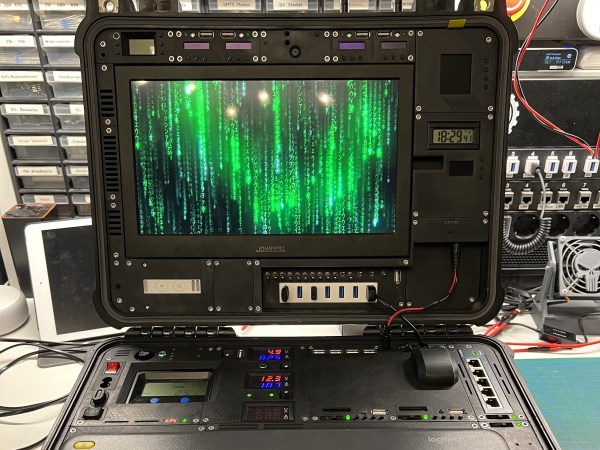With AI systems getting smarter every day, one might wonder if they might someday evolve into a sentient Skynet-like system and try to take over the world. We’re not sure how close we are to such a situation, but we do know that if the robot apocalypse were to happen, we would want to stay close to [LordOfAllThings], who would likely be carrying the Black Beast. This scary-sounding machine is in essence a Raspberry Pi-based portable computer built inside an outdoor carrying case, with a wide range of unusual peripherals that make it the digital equivalent of a Swiss army knife. In other words, it’s a cyberdeck built for end times — and whatever comes after.
For example, an array of ESP32-based modules plus an SDR module allow you to intercept and analyze hostile robots’ communications, whether they’re using Bluetooth, WiFi, LoRaWAN, or anything in the 433 or 868 MHz ranges. An FM transmitter comes in handy for reaching out to fellow citizens who are trapped with nothing more than an analog radio receiver, while a suite of environmental sensors (including a Geiger counter) should help determine if Skynet has released any harmful substances to flush out those last few pesky humans. (Ed. note: No marigolds in the promised land and all that.)
If you manage to find a wired Ethernet connection somewhere, a built-in five-port gigabit router lets you set up a local network, obviously with a custom network analyzer to detect any unwanted intrusions. A storage compartment contains every kind of cable you could need, as well as useful gadgets like flashlights and, indeed, an actual Swiss army knife.
Continue reading “2022 Cyberdeck Contest: The Black Beast Will Help You Survive A Robot Apocalypse”













